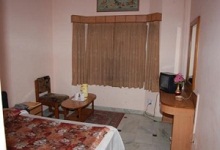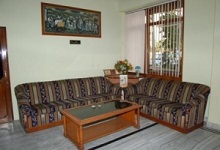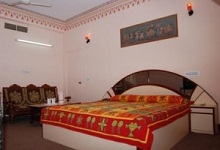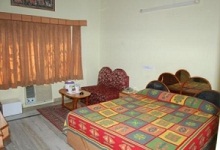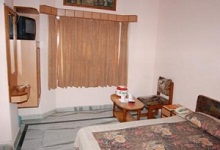JAIPUR
Jaipur is the capital and the largest city of the Indian state of Rajasthan and was the first planned city of India. The design of Jaipur was done by an Bengali architect named Vidyadhar Bhattacharjee. Jaipur was established on 18th November 1727. Jaipur is a combination of traditional, cultural, historical and modern architectures. Being a popular tourist destination in India, Jaipur forms a part of the west Golden Triangle tourist circuit and it also serves as a gateway to the major tourist destinations at Rajasthan, every tourist gets attracted by Jaipur in their first sight. In the year 1876 Maharaja Ram Singh painted and decorated Jaipur with pink colour in honor to welcome ‘Prince Albert Edward – The Prince of Wales’. From then onwards Jaipur is also referred as ‘The Pink City of India’. Nahargarh, Jaigarh and Moti Dungri are situated to the distant horizon of Jaipur. The whole city of Jaipur is guarded with huge walls. According to the architectural style, Jaipur is divided into nine blocks, two of which were reserved for the Royal families, and the remaining seven blocks are for the common people. The construction of the city of Jaipur was started in the year 1727 and it took 4 years to get completed. There are several places of tourist interest throughout the city of Jaipur. Jaipur city is a standing witness of the Rajput rule in India. The central attraction of Jaipur city is its City Palace. In the year 1725 Maharaja Sawai Jai Singh decided to establish a big city and shift his capital in order to support the growing population. The old city of Jaipur is guarded with 20 ft long and 09 ft wide walls, with seven entry gates. To the south are Ajmeri Darwaza or Kishan Pole, and Sanganeri Gate or Shiv Pole, Ghat Pole is the last entry gate of the south, to the west is Chand Pole or Moon Gate and to the east is Suraj Pole or Sun Pole, and to the north is Dhruv Tara or Pole Star. Jaipur is surrounded by hills with all sides except the south- west side. During the past the small houses were reserved for the state employees, but now these are converted into shops. Jaipur is unusual among pre-modern Indian cities in the regularity of its streets, and the division of the city into six sectors by broad streets. The native dialect of Jaipur is Dhundarai, but in addition to that the local habitants also speak Hindi and English (as their official language). Jaipur the land of legends charms every soul with its rich history, majestic monuments, colourful culture, lively festivals and adventure gateways. From the heights of a royal fort, into the depth of an age old tradition Jaipur has it all. At Jaipur tourists are charmed by the grandeur of Rajasthan’s royalty. Beautiful palaces and gigantic forts at Jaipur are the inherent gifts of the royals those tourists can explore in an extravagant style.
Places of tourists interest around Jaipur:
City Palace — City Palace was built by Maharaja Sawai Jai Singh II. City Palace of Jaipur is guarded by huge walls. The huge structure and architecture of City Palace reminds of the Mughals and Rajputs rule in India. Beautifully decorated with white colour marbel stones. The City Palace was the ceremonial and administrative seat of the Maharajas and also acts as a location of religious, cultural event, patron of arts, commerce and industry as well. Inside the City Palace there are Diwan-E-Aam (hall of public audience) and Diwan-E-Khas (hall of private audience). At Diwan-E-Aam the king meets with the common people and Diwan-E-Khas was reserved for the special guests. Diwan-E-Aam is a three sides open hall. Inside the City Palace tourists get to see Chandra Mahal, Badal Mahal and Mubarak Mahal. The Mubarak Mahal inside the City Palace has hanging doors and windows which are the examples of the excellent Hindu art forms and architectures. Apart from these other watchable inside the palace includes the museum has a wide collections of arms, ammunition, jewelries, chariot, palanquin, carpets and numerous paintings. The city palace museum is named as Maharaja Sawai Jai Singh II museum. At the City Palace museum the uniform of Maharaja Sawai Madao Singh I is preserved which is 2 meter in length, 1.2 meter wide and weighs upto 250 kg. The main entry gate is Udai Pole, the ticket counter is located here. At the centre of the city palace is a seventh storey Chandra Mahal and it offers stunning views of the nearby gardens and the Jaipur city. The Dewan-E-Khas has now transformed into a museum. The entry and exit gates of the city palace are named differently. The Udai Pole near Jaleb Chowk, the Virendra Pole near Jantar Mantar and the Tripolia or three poles are the three main gates. The Tripolia gate is reserved for the entry of the royal family and the other two gates were reserved for the common people. The Udai Pole leads to Diwan-E-Aam and the Virendra Pole leads to Diwan-E-Khas. The ‘Friends of Museum’ inside the City Palace is a section of markets that sells crafts, miniature paintings and Kundan jewellery made by the local artisans and the women of self help group.
Jantar Mantar — Jantar Mantar is the biggest preserved observatory among the other five those were built by Sawai Jai Singh II. The rest four observatories are at Delhi, Mathura, Ujjaini and Varanasi. Built during 18th century in the year 1720, the Jantar Mantar is an open area with numerous machines made from stone. The Vrihat Samrat Yantra is world’s largest stone sundial consists of gigantic triangular gnomon with the hypotenuse parallel to earth’s axis that allows observation of astronomical positions with naked eyes. After renovation in 1901 Jantar Mantar became a world heritage site in the year 2010.
Hawa Mahal – Hawa Mahal also known as ‘The Palace of Winds’ or ‘The Palace of Breeze’ is a monument made of red and pink sand stone built in the year 1799. Hawa Mahal is a pyramid shaped five storey structures with hanging balconies similar to the honeycomb of a beehive and numerous windows in each floor. Each floor is named differently, the first floor is named Sharad Mandir, the second floor is named Ratan Mahal – the name is derived from the delicate works of glass, the third floor is named Bichitra Mandir, the fourth floor is Prakash Mandir and the fifth floor is Hawa Mandir. The Hawa Mahal has 953 stone carved meshes like small windows or screens call Jharokhas decorated with intricate latticework behind which the women of the Royal family watch the possessions and the city life away from the crowd. The Hawa Mahal at Jaipur portrays a clear picture of the Rajasthan architecture. There is also a museum that remains open from 09.00 am to 05.00 pm. At Hawa Mahal there are no staircase available, only slops are used to travel from one floor to another. Hawa Mahal offers panoramic view of the whole city of Jaipur. The main architect of Hawa Mahal was Usta Lal Chand. The large corridors, carved screens, small casements and arched roofs are some of the features of Hawa Mahal
Amer Fort or Amber Fort and Palace — Amer Fort or Amber Fort at Amer is a principal tourist attraction in Jaipur. Located 11 km from the city of Jaipur on the high hill top beside NH 8. The architecture of the Amber Palace is a mix of Mughal and Rajput rule. Amber Fort was built around 16th century by the Mairs and later ruled by Maharaja Mann Singh I. Amber was the ancient capital of Jaipur until 1727. The Amber fort and Palace was built based on a big water body nearby. The Fort was built during 1592 by Maharaja Mansingh Mawta I. The name Amer or Amber is derived from Ambikeshwar an incarnation of Lord Shiva. Amer is famous for the Indo – Islamic architectural structures. Before Jaipur, Amer was the capital of the Khachwa for around 600 years. The main attraction of this palace is ‘Sesh Mahal’ or Mirror Palace built by small pieces of glass. The flowing water from the hills is deposited in Maota Lake and is the main source of water for Amer Palace. The Amer Fort and Palace was constructed with red sandstone and marbel. The stone carved meshes of Suhag Mandir at Amber are an excellent work of art. The palace is laid out of four levels each with a courtyard, these are Diwan-E-Aam, Diwan-E-Khas, Jai Mandir and Sukh Niwas. The Dewan-E-Aam is built on forty round shaped pillars. The Sukh Niwas is a place where cool climate is created artificially. Apart from these Amber Fort has many Pavilions and Galleries. And the temple of Shila devi which was worshiped by Maharaja Mann Singh and is located near Ganesh Gate. The main gate of Amber Fort is made of sandalwood decorated with ivory are worth watching. Other watchable at Amber Fort includes Radhamadhav temple, Silamata temple, Jagat Siromoni temple, Cow temple, Narsingha temple (or Half man and half lion), Jash temple, the cenotaph Maharaja Man Singh I, Museum and Pannamiya-Ki-Bawli. The Ganesh Jai temple, Sesh Mahal, Sukh Niwas and Ganesh Pole are among the main tourists attraction at Amer. To the north of Amber is Dilaram Bagh. In the middle there is Kesab Keyari garden. Both sides of the Aram Bagh there are huge pillars both on the east and west sides and beside the pillars are waterfalls and narrow canals. Tourists need to enter the palace by crossing Bhairab Pole. The entry gate showcase two cannons on both sides.
Albert Hall Museum — This is the oldest museum of the state built in the year 1876. Albert Hall Museum is an Indo – Saracenic structure which was developed as a museum. Tourists can also visit the famous Indology museum at Ramniwas Bagh.
Jal Mahal — Jal Mahal was built on a water body in the year 1799 by Maharaja Pratap Singh to escape the scorching heat of the summer. The Jal Mahal was built on Mansagar Lake. The Jal Mahal is five storey building built in red colour sand stone the reflection of which falls on the bluish water of the lake creating a excellent image.
Govind Dev Mandir (Temple) — The Govind Dev Ji temple at Jaipur has the idol of Radha Govind. During the time when Aurangazeb devastated all temples, at that time Maharaja Jai Singh brought this idol from Brindaban with the help of few Bengali priests.
Jaigarh Fort — Jaigarh fort is a special attraction around Jaipur built during 18th century on a promontory. The Fort is guarded with 03 km long walls. Jai Garh Fort is located 15 km from Jaipur and built in the year 1726. The Jaigarh Fort is connected with the Amber Fort through underground route and its architecture is very similar with Amber Fort. Inside the Jaigarh Fort there are Laxmibilas Palace, Lalit Mahal, Bilas Mandir, Aram Mandir, museum and armoury. There is a museum at Jaigarh Fort that offers excellent view of Amer Fort and Maota Lake. The world largest cannon is placed here named ‘Jai Ban’ or Jaivana, which is 20 ft in length and the base of the wheels are 09 ft. Car reaches 20 to 30 ft below the cannon and the remaining distance tourist need reach by walking. Inside the fort there is a tower, temple and palace which are very beautiful.
Nahargarh Fort — The Nahargarh Fort was built on a hill top at an elevation of 600 ft on the edge of Aravalli Hills overlooking the city of Jaipur. Nahargarh Fort was built in the year 1734. On the way to Jaigarh Fort tourists will come across Nahargarh Fort. The Fort was originally named as Sudarshangarh but it became Nahargarh which means ‘abode of tigers’. The Manabendra Bhawan or Palace built by Sawai Madho Singh had suites for the queens of Jaipur and at the top there was a suite for the king. The Fort was extended in 1868 during the reign of Sawai Ram Singh. From 1883 to 1892 a range of palaces was built at Nahargarh. Jaipur Wax Museum is another tourist attraction built on the left side at the entrance of Nahargarh Fort.
Ram Niwas Garden — This is the Jaipur city zoo built on an open space and is one of the oldest in India built by Maharaja Sawai Ram Singh II of Jaipur in 1868. There is also an aviary, a herbarium and a museum.
Gaitor — Gaitor is a complex that has collections of mausoleums of Jaipur’s royal family. The Royal Gaitor is located 8 km on the outskirts of Jaipur to the North – West below the Nahargarh Fort. Gaitor is only a short drive away from Jaipur. The complex contains the cenotaphs of Jaipur’s former rulers such as Maharaja Madho Singh II, Maharaja Jai Singh II and Pratap Singh. Gaitor demonstrates an impressive use of marble in its exquisite domes and carved pillars.
Galtaji — Galtaji is an ancient Hindu pilgrimage located 10 km from Jaipur. This site is famous for a series of temples famous among these is the Sun temple. A natural hot spring has emerged to the east of the temple on high hill that fills up the sacred water reservoir. Visitors and tourists ascend the hill top to the poll which offers panoramic view of Jaipur City.
Birla Temple — The Birla temple at Jaipur is also known by the name Laxmi Narayan temple is a Hindu temple in Jaipur. The whole structure was built with white marbel stone. The temple remains open from 08.00 am to 12.00 noon and 04.00 pm to 08.00 pm. The temple has four different parts the sanctum, tower, main hall and the entrance. The temple has three towers those refer to the three main faiths of India and the stained glass depicting Hindu traditional stories. The construction was started in 1977 and was completed in 1988. Below the temple is B.M. Birla Family Museum and G.P. Gallery.
Sisodia Rani Garden and Palace — The palace garden is located around 06 km from Jaipur and was built by Maharaja Sawai Singh II in the year 1728. The palace has tiered multi – level gardens with fountains, watercourses and painted pavilions. The palace mainly lies on Jaipur – Agra highway.
Vidyadhar Garden — Built in the memory of the main architect of Jaipur city, Viyadhar Bhattacharya in the year 1988 and is around 08 km from the city of Jaipur near Sisodia Rani Ka Bagh. The garden is an ideal place for nature and art lovers and is one of the best maintained gardens of Jaipur.
Jhunjhun — Jhunjhun is also famous for its art form. At Jhunjhun few of the palaces attracts tourists are Marug Das Tibriwala Haveli, Mehau Das Modi Haveli and Khaitan Haveli. At Jhunjhun there is also a Hawa Mahal constructed by the name Khetri Mahal. The temple of Bihariji at Jhunjhun is famous for its fresco paintings. Other places of tourist interest at Jhunjhun are Badalgarh, Jorwar Garh, Mertani Bawri, Kamaruddin Shah Dargah or Tomb.
Churu — Churu is mainly famous for its Kothari Haveli, Kanaiyalal Bagla Havele and Surana Haveli. Among the plains at Rajasthan, Churu becomes the coldest during winter.
Sikar – Sikar is a city located midway between Agra and Bikaner on the National Highway 52 in the state of Rajasthan in India. It is located 114 km from Jaipur.
Samode — Samode is around 40 km from Jaipur. This beautiful city is surrounded by hills from all sides. The main attraction of this city is its palace, many myths are heard regarding this palace. The walls of the palace are beautifully decorated with paintings and glass art, though at present it is converted into a heritage hotel.
Other Watchable — Other watchable around Jaipur are Anokhi Museum of Hand Printing – Located in a traditional townhouse, this museum showcases the art & heritage of wood-block printing. Akshardham temple – Elaborately decorated temple honoring Hindu deity Narayan & set amid leafy gardens with fountains. Shri Digamber Jain temple – The ancient Shri Digamber Jain temple of Sanganer is 16 km from Jaipur is an ancient Jain temple in Sanganer, Rajasthan made of red sand stone. Ram Niwas temple – Ram Niwas Garden is a garden situated in Jaipur city in Indian state of Rajasthan, built by Maharaja Sawai Ram Singh of Jaipur in 1868.
Jaipur has number of museums for tourists visit, some of these are Central museum, Dolls museum, S.R.C museum of Indology, Shree Sanjay Sharma museum, Philatelic Bureau and Museum.
Things to do — Shopping at Jaipur
In the bustling lanes of local markets at Jaipur, tourists are given an entire array of products to shop from. Rajasthan’s rich local textile cloth, miniature paintings, finely – crafted jewellery and ethnic artefacts are some of the few things one will consider treasuring for life. As tourists explore the variety of goods, they will discover traditional richness in minute details and take home a reflection of royal legacy. Some of the famous markets around Jaipur city are Johari Bazar, M.I. Road (Mirza Islamis Road), Tripolia Bazar, Chaura Rasta, Neheru Bazar and Bapu Bazar and many more.
How to reach — Jaipur is well connected through a strong road and rail network with other major cities in India. Jaipur is also connected through both domestic flights with other metros in India and international flights with abroad. Jaipur is well connected by meter gauge railway route with Churu and Sikhar. Direct buses ply from Jaipur with other major tourist destinations at Rajasthan.
Jaipur City Tour: Rajasthan Tourism Department organizes conducted city tours around Jaipur, some of these are described below.
Full day tour — This tour starts from 09.00 am and ends at 06.00 pm. In this tour tourists can visit Amber Fort and Palace, City Palace and Museum, Jantar Mantar or Observatory, Hawa Mahal, The cenotaph of the Maharajas, Nahargarh Fort and Palace, Jaigarh Fort, Laxmi Narayan temple or Birla temple and Kanak Brindavan.
Half day tour — This tour is divided into three phases. The first phase starts at 08.00 am and ends at 01.00 pm, the next phase starts at 11.00 am and ends at 04.00 pm and the third phase starts at 01.00 pm and ends at 06.00 pm. In these tour tourists can visit Amber Fort and Palace, City Palace and Museum, Jantar Mantar, Albert hall, Hawa Mahal, Jall Mahal, Cenotaph of the Maharajas and Laxmi Narayan temple.
Night tour — This tour is also known as ‘The Pink City by Night’ and it starts at 06.00 pm and ends at 10.00 pm. In this tour tourists can visit Raj Mandir Cinema Hall, Statue Circle, Amar Jawan Jyoti, Assembly Hall, Birla temple, Albert Hall, Hawa Mahal, Jall Mahal, Kanak Brindavan, Amber Fort and Nahargarh Fort. At the end of this tour tourists are served with vegetarian food in the cafeteria.
Please note each tour costs exclude entry charges to the monuments and palaces, camera charges and car charges to visit Amber Fort.
Best time to visit — April to May is the pre – monsoon season or summer season. July to September is the monsoon period which sees rainfall. October to November is the post – monsoon season when the climate is pleasant. December to March is the winter season.
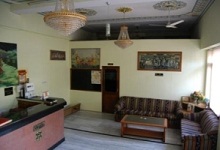
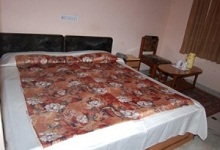



HOTEL SURBHI PALACE
Hotel Surbhi Palace at Jaipur is a unique way to enjoy your stay in the Pink City. Hotel Surbhi Palace has its own distinctive character that defines the concept of luxury and comfort with its stunning appeal, beauty, elegance and courtesy. Hotel Surbhi Palace is ranked as one of the best run budget hotels in Jaipur. Hotel Surbhi Palace is located in the heart of city with close proximity to the bus-stand and railway station. The hospitality of Hotel Surbhi Palace is personified with their 20 AC and Non AC rooms, serving tourists 24×7.
Amenities available:
Well furnished rooms with attached bathrooms.
Western type toilet and 24 hrs running hot and cold water.
24 hrs rooms service and travel assistance.
In house dinning facilities.
Pick up and drop facility on request (paid service).
24 hrs power back up.
LED TV in all rooms.
Tariffs:
Deluxe rooms (single bed) @ 800/-
Deluxe double bed rooms @ 1000/-
Super deluxe rooms (single) @ 1300/-
Super deluxe double bed rooms @ 1500/-
Royal deluxe single rooms @ 1800/-
Royal deluxe double bed rooms @ 2000/-
GST @ 12% on the above room tariffs.
HOW TO BOOK: Call us at 9831311606 , 9830381306, 9830619422, 9831208172 to get the current availability status or use the query form furnished below with all you travel queries and submit, we will call/ contact you directly.
Or, you may also directly book from our Kolkata office at: 8C Shanti Ghosh Street, Kolkata – 700003. Nearest Landmark: Manindra Chandra College and Shyambazar Metro Railway Station (Gate No: 3)
